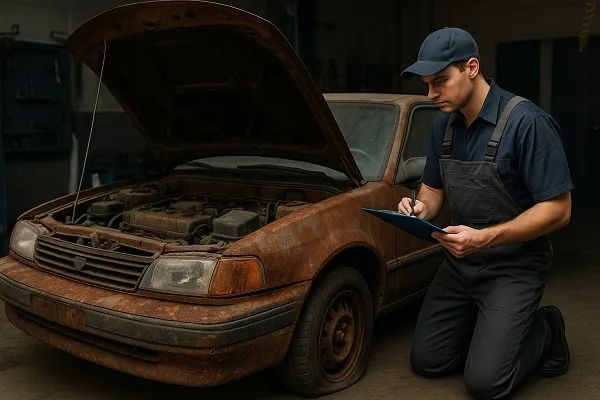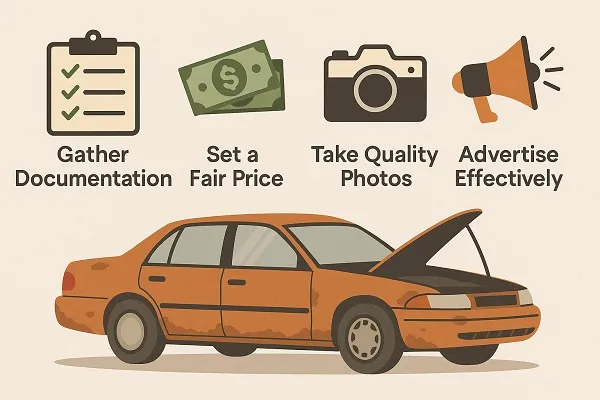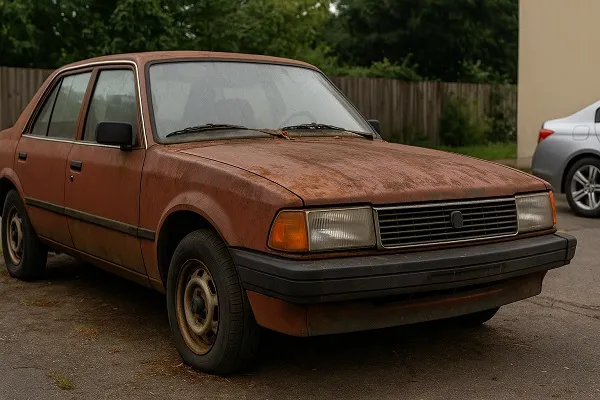You can sell a car that’s been sitting for years, but it’s not always as simple as listing it online and handing over the keys. Cars that haven’t been driven for a long time often have mechanical, legal, or cosmetic issues that can make the process a bit more complicated. However, with the right steps and preparation, selling a long-abandoned vehicle is entirely possible—and often profitable.
Whether it’s a project car you never got around to restoring, an inherited vehicle, or simply a car left unused in your garage, there’s a market for almost every kind of automobile. Here’s what you need to know before you try to sell a car that’s been off the road for a long time.
Assess the Condition of the Vehicle
Before listing a car that’s been sitting for years, it’s critical to understand its condition. This will help you set realistic expectations and determine what type of buyer you’re targeting—whether it’s someone looking for a fixer-upper or a scrapyard.
Check for Common Issues in Sitting Cars
Cars that have been unused for a long time are prone to specific problems:
- Dead or degraded battery
- Flat or dry-rotted tires
- Stale or contaminated fuel
- Seized engine or transmission
- Rust or corrosion on the body and frame
- Rodent damage to wiring or upholstery
- Frozen or failing brakes
- Cracked hoses and belts
Even if the car looks decent on the outside, internal components may have deteriorated. A basic inspection can give you an idea of how roadworthy—or not—the vehicle is.
Consider a Mechanic’s Inspection
If you’re unsure about the car’s condition, paying for a mechanic to inspect it could be worthwhile. This can help you identify major issues that affect value or safety. You can also use a mechanic’s report as a selling point if the car is in better shape than expected.
Determine the Value of the Car
The value of a car that hasn’t been driven in years depends heavily on make, model, mileage, and current condition. You’ll likely need to do a bit of research to determine whether your vehicle is worth restoring, parting out, or scrapping.
Factors That Affect Value
- Mileage and service history
- Rarity or demand for the model
- Presence of title and registration
- Rust and structural damage
- Market demand for parts or restoration projects
Use tools like Kelley Blue Book, NADA Guides, or even online forums specific to your car’s make and model to get an idea of potential value.
Should You Repair It Before Selling?

This is a common question for owners of long-sitting cars. Sometimes a small investment can raise the sale price significantly. Other times, it’s better to sell the car as-is and let the next person take on the project.
Situations Where Repairs Might Help
- Minor cosmetic fixes like a wash, vacuum, or polishing headlights
- Replacing a dead battery to show that the car can start
- Inflating or replacing tires for easy towing
- Draining and refilling fluids to prevent damage
Avoid investing heavily in major repairs unless you’re confident you’ll recover the cost in the sale. For example, replacing the engine or transmission usually doesn’t pay off unless the car is collectible or high-value.
Selling Options: Who Will Buy a Sitting Car?
There’s more than one way to sell a car that’s been off the road for years. Your approach should match the condition of the vehicle and how much effort you’re willing to put into the sale.
1. Private Buyers
Many people look for cheap project cars or parts vehicles. Posting on sites like Craigslist, Facebook Marketplace, or enthusiast forums can attract these buyers. Be honest about the condition and take clear photos.
2. Auto Salvage Yards
Junkyards will buy old, non-running vehicles for their scrap metal or parts. This is usually the fastest option, especially if the car is too far gone for restoration.
3. Car Donation Programs
If the car has minimal value, donating it to charity might give you a tax deduction. Organizations like Kars4Kids or Habitat for Humanity often accept non-running cars.
4. Online Car Buyers
Some companies specialize in buying old or junk vehicles and offer free towing. They often provide quotes quickly and don’t require the car to run.
What Paperwork Do You Need?
Even if the car hasn’t moved in years, you’ll still need to handle the legal side of selling.
Required Documents Typically Include:
- Vehicle title (or proof of ownership)
- Bill of sale
- Photo ID
- Release of liability form
- Odometer disclosure (if required in your state)
If you’ve lost the title, contact your state’s DMV for a duplicate or to understand your options. Some salvage yards may still buy cars without a title, but private buyers almost always require one.
Tips to Make the Sale Easier

Even when selling a neglected vehicle, small efforts can increase buyer interest and value.
- Clean the exterior and interior. A simple wash can make a big difference.
- Be transparent in your listing. Mention how long the car has been sitting and any known issues.
- Take detailed photos. Include shots of the body, interior, engine bay, and undercarriage if possible.
- Be flexible on price. Many buyers are taking a risk on a non-running car, so be prepared to negotiate.
- Offer towing help. Some sellers offer to split towing costs or assist with logistics.
Legal and Environmental Considerations
Letting a car sit for years can lead to fines or legal issues, depending on where it’s stored. Before selling, check local laws about abandoned or inoperable vehicles on private property. Some cities require them to be registered or kept out of view.
Also, if fluids are leaking or the car is significantly deteriorated, it may pose environmental hazards. Responsible disposal or clean-up may be necessary in those cases.
Is It Worth Selling?
Absolutely—just manage your expectations. If you’re hoping for top dollar, a car that’s been sitting for a decade may not get there without significant effort. But if your goal is to clear space, put a little cash in your pocket, or pass on a restoration project, selling is a smart move.
The demand for old vehicles—especially for parts or DIY rebuilds—is stronger than many people realize. Even if your car doesn’t run, someone out there may see value in it.
So yes, you can sell a car that’s been sitting for years. With the right approach, a little research, and some honesty in your listing, you can turn that long-forgotten vehicle into money in your wallet.
Content reviewed and published by Sell My Car Colorado Editorial Team.
